#plinian
Photo
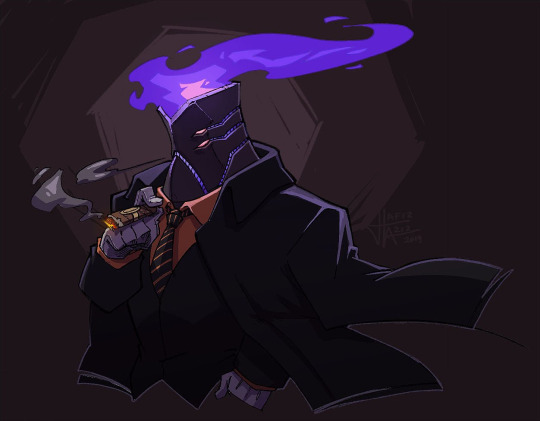
Big Boss Plinian Colored (2019)
56 notes
·
View notes
Text

page 550 - my fury is like this volcano's eruption; enormous and hot but delivered with such dribbling weakness it's just an amusing distraction unless you happen to be right there and also don't take three steps to the left.
#economics#economy#economist#graph#chart#nobel#typical age earnings profile#typical#profile#class#income#determinants#volcano#eruption#erupt#magma#lava#plinian#hawaiian#strombolian#icelandic#vulcanian#rage#anger#fury#geology#geography
1 note
·
View note
Text

this isn’t st guinefort, this is just St Christopher in the specific orthodox traditions where he’s a werewolf. not to be rude but it literally says christof next to his head.
Anyway, St Guinefort, the greyhound who was a saint:

Extremely long story short, he killed a snake to save a baby, but the blood over him and the child make it look like the dog had attacked them. His master killed him, but then realised what had happened and guiltily buried him under a tree; the tree became a sacred place that people could take sick children to be healed. We know of St Guinefort from a source complaining that this was secretly a demon, because a dog, of course, cannot be a saint. But there was a dog who was a saint, and his cult persisted for at least 800 years, so I think Guinefort won.
#he’s a French folk saint not an orthodox one so that should be the clue that the icon is way off up there hdksjdjahs g#good boy guinefort#‘why is st christopher sometimes a werewolf’ racism. st christopher was seen as scythian; scythians were seen as barbarians; barbarians and#’plinian’ or ‘monstrous races’ are grouped together as existing at the edge of the known world. among the plinian races are cynocephali#aka dog headed people. which to modern eyes looks like werewolves. a church father (Augustine? can’t remember) commented that since god#also made the monstrous races they should also be considered people and should be converted. thus st christopher is a racist werewolf
67 notes
·
View notes
Text
(While I am compiling hair, I’m also trying to figure out the best way to use fog emitters to mimic a volcanic eruption. I have a couple of codes I think could work, but I’m also just...not sure how to best set off the lava flow objects Murf made.)
#i know the sims is not meant for this kind of thing but i want plinian ash clouds#and lots of lava bombs and lightning and billowing smoke and all that fun stuff
4 notes
·
View notes
Text
Volcanoes: An Overlooked Nuisance
Nature recently did a book review on Adventuress in Volcanoland, by Tamsin Mather. The basic message is, volcanoes are nasty, and we have to expect many more eruptions. Mather is a volcanologist, and I have met some of them. It is a job that requires great care. The primary method is listening; when magma moves around under the Earth it makes sounds. The more dangerous part of the job is to…
View On WordPress
#eruption size#lava temperatures#Plinian eruptions#pyroclastic flows#Santorini#Siberian traps#Tambora#Taupo#Vesuvius#Yellowstone
0 notes
Text
Something Full-Bodied and Red
Did a thing. Here's period smut!

It hits you right as he says, “No need to bleed by yourself, my love.”
Your jaw drops. You stare at him, in his words, all agog. “You… are you saying…?”
“Offering my companionship during your trying times? Yes, I believe I am. You smell delicious, Eleanor. I’ve been thinking about devouring you all day.”
No mistake as his gaze slides down to the extra padding beneath your trousers. Or the way his pupils eclipse the red irises.
Or: Aunt Flo comes to visit. Astarion is delighted to make her acquaintance.
You really should a known when Gale made an—objectively-speaking and you even knew it at the time—simple statement about the best path to take. The day is hotter than Satan’s ass crack, y’all are sweating and miserable, and the rage surges up in you like goddamn Plinian eruption.
You say something along the line of, “No one asked your opinion, and yet here we are, listening to you talk anyway.”
It’s too far. You know it. Knew it before you even opened your mouth in that split second judgment call.
Gale’s face falls before he picks it back up and resettles his blasé mask.
Shit goddamn fuck.
Everyone hears it, too. Even Astarion gives you a Look.
“I’m sorry, Gale,” you say. “I really am. I’m…that was an asshole thing to say.”
His smile is still a couple shades cooler than usual. “It’s alright. The heat is getting to us all, I believe.”
An olive branch, when you’re the one who snapped.
“I mean it. Heat or not, that was rude of me. ‘Specially since you’re right.”
Cause he is. Heat melts your brains to pudding, and you were about to stomp y’all past the correct intersection to take y’all back to the inn.
His smile thaws a touch. He inclines his head.
“Now you’ve done it,” Astarion says. “He’s going to be insufferable all day.”
“Being correct is not being insufferable,” Gale says, one finger held up, the spitting image of some college professor. “Especially when it saves all of us time and effort in this truly insufferable mugginess.”
Poor man don’t know muggy. That’s when the backs of your hands sweat. Muggy is when the air’s so wet it’s almost hard to breathe. It’s one-hundred-and-thirteen goddamn degrees Fahrenheit with ninety-five percent goddamn humidity.
But you keep that shit to yourself because you fucked up and he’s owed a dunk on you.
As y’all turn up the (correct, this time) road, Astarion sidles in. Gives you a glance and the smallest line creases his brow.
“’M okay,” you say.
He nods. Bumps his hand against yours in his totally-not-a-stray-cat way of asking for attention. You thread your fingers through his gloved ones, and the both of you pretend that don’t soften his entire posture.
The inn is only half full. They got alcove beds along the walls, so you and Astarion decide to share. The two of you set up the privacy screen, and he changes into sleep pants while your back is turned.
Cazador McFuckface is dead. Astarion is a free man, and y’all have been intimate. But you still give him his modesty, always; it seems to please him beyond words. You can tell in the soft sigh as you turn away and leave him to it. In the languid movements of his limbs as he finishes and slides onto the mattress (only grumbling a little at the poor quality of the linens). In the roundness of his eyes as he stretches out and waits for you to join him.
He's still a murder hobo and a thieving, snarking, asshole gremlin. But there’s more to him, now.
You fiddle with your trousers. It really is too hot to sleep in clothes; back home, you always slept bare. It’s how you landed on an alien ship buck-ass naked.
He seems to sense this dilemma. Murmurs, “I won’t tell if you don’t.”
And then gives you a saucy little wink, the dork.
So you shuck off all but your smallclothes (that he sewed for you; nothing says “You’re fine I guess” like a man sewing you some drawers) and scooch in after him. He shuffles closer to the wall while you reach up to untie the cord holding the bed curtain open.
It’s only the illusion of privacy—Lae’zel murmurs to Shadowheart across the room and Karlach’s familiar snores already fill the air. But it’s a mental thing, and you turn and Astarion snuggles into you.
“God that’s nice,” you say.
One benefit of him being undead is the man don’t produce body heat. Which means he’s nice and cool against you. Which was real weird at first (something air temperature shouldn’t move or speak), but it’s him and he’s safe, so this feels like him, like safety.
He groans in response—the downside of undead is the man don’t produce his own body heat. Which means his joints get achy unless he’s fed within the last day, or he’s got a nice, large lover blasting him with her own furnace heat.
You’re tired and vaguely hurting. Astarion likes to be the little spoon, and when he’s facing you, he koala’s onto your front. Face tucked in against your neck (or your cleavage; “you make a fantastic pillow, darling”), arms wrapped around your middle, legs all tangled with yours.
But it’s so damn hot, and the walking was too damn long. Your body thrums. Bastard won’t settle. You become too aware of his habitual breath fanning your skin. Of his coolness against you. The arm slung over your ribs.
It’s easy to imagine that mouth of his opening. Tongue snaking out to lap at you, blunt front teeth nipping up and up. Until he finds your lips and—
You shift.
His crotch is right there. Ain’t nothing going on, but you know now what he feels like when he presses against you. When he ruts against you, eyes closed to slits, forgetting to breathe. His hand around yours on his cock as he shows you how to pleasure him. The salty, bitter tang as he comes in your mouth—
“Shit,” you say and shift your legs. Astarion nuzzles against your neck but otherwise says nothing.
Y’all’ve had sex in public. Had sex in an alley. In an inn. But none of those was this close to y’all’s friends. Curtains muffle sound about as well as tent fabric, but they been pitching their tents away from your shared one for some time and for a damn reason. You always thought you were quiet. Turns out, with a partner, not so much (it’s the shit he says; his pick-up lines were so over-the-top they was kinda funny, but when he means it? Who-wee).
You sigh. It’s been a long day. Y’all need to sleep.
You try to shift your hips without dislodging him, hoping to find the right angle to ease the general achiness—
“That’s going to make it more difficult for me to trance, darling,” Astarion says against your skin.
(You don’t shiver. That would be too desperate. And even if you did, he don’t mention it.)
“Sorry,” you say. “Kinda restless. You wanna sleep in separate beds?”
Then he looks up and even in the curtained gloom, his eyes pick up that red shine like a monster in the woods come to lurk.
Okay, so you absolutely shiver. You feel his smile, slow and syrupy, against your collarbone.
“Who said anything about leaving?” he says.
This man. What he does to you. You try to run your fingers through your hair, but it’s dark, you’re human, and you catch his ear instead.
Now he shudders. Presses a kiss to where your neck and shoulder meet.
“Are you…?” you say, because you ain’t always good at reading people and this man in particular is real good at getting himself misread on purpose.
His cool fingers slip down your belly to tease along your smallclothes as his mouth opens to suck on your neck (it’ll bruise). His fingers trace lower, lower…
You clasp a hand over your mouth.
“Offering to help you work through whatever has you so bothered?” he says.
Heat rushes between your legs. You are so horny for him it’s ridiculous. His hand lifts so he can trace along your outer thigh. Then his knee slots between your legs.
“Be a dear and bring this up over my hip, hmm?” he says, tapping a pattern on your thigh. “Open your legs for me, my love.”
“But everybody’s so close.”
He sucks at the damn love bite. He loves leaving marks on you. You think you like him leaving marks on you.
“So long as you stay quiet,” he says, voice gone soft and lilting as his fingers tease under your smallclothes to stroke lower.
The rest on AO3.
#full-bodied and red#these two shitheads#astarion smut#bg3 smut#tavstarion smut#period kink#astarion period kink#blood kink#vampire shenanigans#these two are so weird#idiots in love#they're both assholes
112 notes
·
View notes
Text
Latin Literature Tournament - Round 1


Propaganda under the cut!
Pliny Propaganda:
His description of Vesuvius is so fucking cool and important, you guys. It's so cool that "Plinian eruptions" are a thing in volcanology
He writes some neat descriptions of gardens and private horticulture, so he's an important source on Roman aesthetics of domestic design
His letters really are bangers. I love his friendship with Tacitus, and the ghost stories are so fucking fun
Juvenal Propaganda:
I love reading and fighting Juvenal. He is such an asshole and so full of shit (and his poems really are a blast)
That said the man sure can turn a phrase. Bread and circuses, anyone?
Is that a farrago in your libellus or are you just happy to see me
#tagamemnon#classics#pliny#pliny the younger#juvenal#latin#latin literature#latin literature tournament#tumblr polls#tournament polls#bracket#satire#letters#epistolography
48 notes
·
View notes
Video
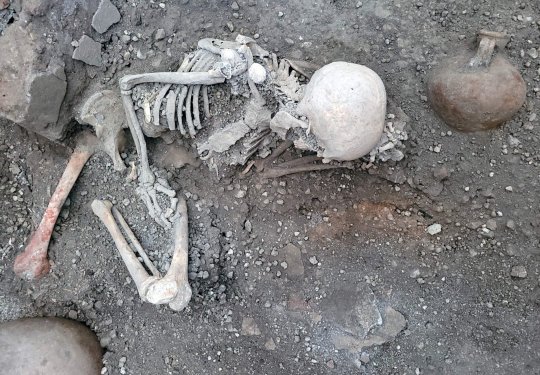
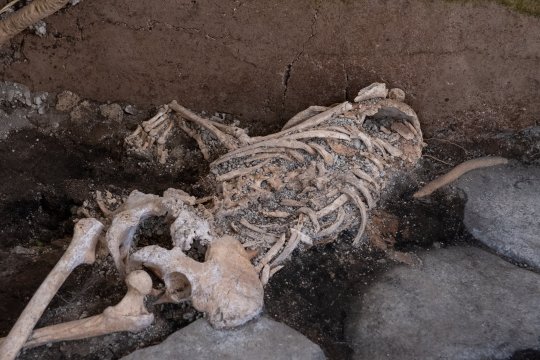

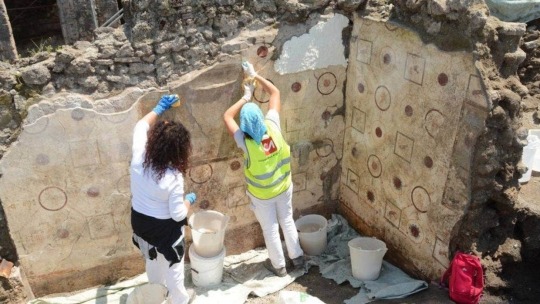


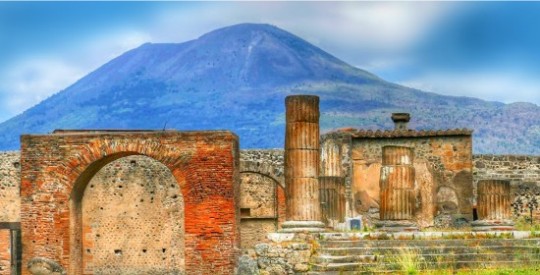
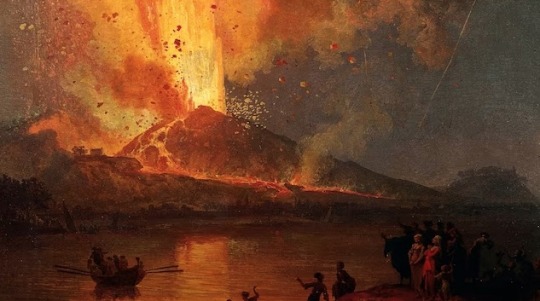
Remains of Three New Pompeii Victims Discovered
The remains of three new Pompeii victims have been unearthed beneath the towering shadow of Mount Vesuvius - almost 2000 years after its catastrophic 79 CE eruption.
The skeleton remains are believed to have belonged to two women and a child, aged between three and four years old.
The trio are believed to have died while seeking shelter in what is suspected to be a bakery, during the first stage of the eruption.
"In these last rooms the bone remains of three victims of the eruption have surfaced," a statement from Pompeii Archaeological Park said.
"Three Pompeians who had taken refuge in search of salvation and who instead found their death under the collapsed attics.
"The individuals were found in an already excavated environment, where only 40cm remained of intact stratigraphy (earth).
"They rested in direct contact with the floor, and presented - together with evidence of important postmortem settlement processes - a series of perimortem traumas due to the collapse of the attic above."
A structure with two intact fresco walls were also discovered as part of the ongoing excavations in an area called Regio IX, a commercial part of town.
One of the walls depicted the sea god Poseidon and Amimone, the other portrays the sun god Apollo and his first love Daphne, who swore to remain a virgin and spurned his advances.
The discoveries come weeks after the remains of two victims, believed to be men, were found beneath a collapsed wall.
The ancient Roman city was destroyed when Vesuvius roared to life the morning of August 24, 79 CE.
By lunchtime the volcano had sent a towering ash and debris cloud into the stratosphere, which rained pumice down on the town as earthquakes rumbled foundations.
This is known as the Plinian phase, which lasted for about 20 hours, and is thought to have been when the three victims perished.
Destruction came for Pompeii in the second eruption stage, known as the Pelean phase.
Pyroclastic surges of molten rock and hot gases surged down the volcano's slopes, burning and asphyxiating people before they had a chance to flee, burying the city.
The eruption is said to have released 100,000 times the energy of the Hiroshima-Nagasaki atomic bombings in World War II.
It's estimated 2000 people died in Pompeii.
However, the exact death toll from the eruption is not known as casualties also occurred in the nearby settlements of Herculaneum, Oplontis, and Stabiae.
#Pompeii#Remains of Three New Pompeii Victims Discovered#Mount Vesuvius#ancient grave#ancient tomb#skeletons#ancient artifacts#archeology#archeolgst#history#history news#ancient history#ancient culture#ancient civilizations#roman history#roman empire#roman art
224 notes
·
View notes
Text
10/24: The tragic day of the Roman Empire
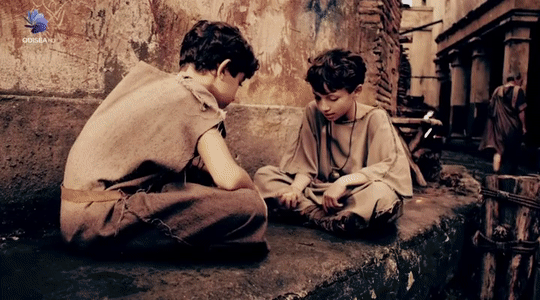


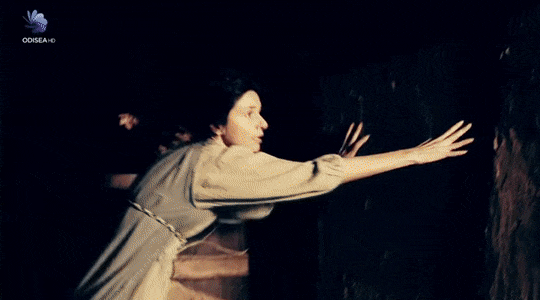

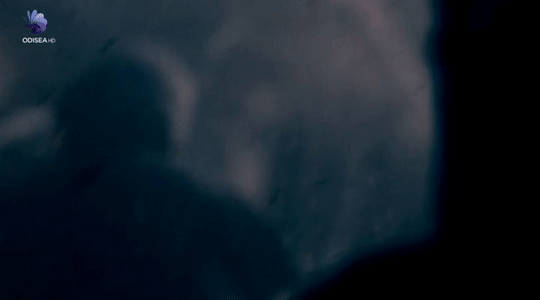
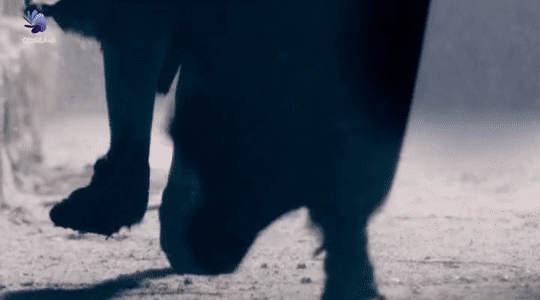

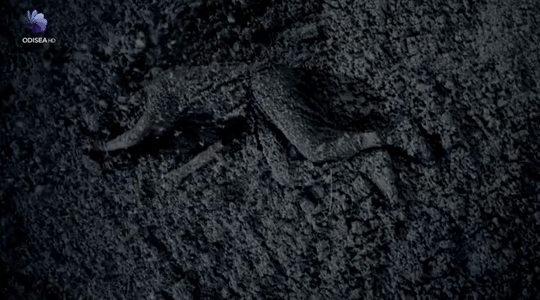
This is one of the letters that the writer Pliny the Younger, an eyewitness to the eruption of Vesuvius in the year 79, wrote to the historian Tacitus. In this letter he recounts in astonishing detail the tragedy as well as the death of his uncle Pliny the Elder.
Remember that there was an error in the translation of the date. Now we know it was October 24.
The ninth day before the Kalends of September (August 24), in the early afternoon, my mother drew to my uncle’s attention a cloud of unusual size and appearance. Its general appearance can best be expressed as being like an umbrella pine, for it rose to a great height on a sort of trunk and then split off into branches, I imagine because it was thrust upwards by the first blast then left unsupported as the pressure subsided, or else it was borne down by its own weight so that it spread out and gradually dispersed.
My uncle hurried to the place steering his course straight for the danger zone. Ashes were already falling, hotter and thicker as the ships drew near, followed by bits of pumice and blackened stones, charred and cracked by the flames. For a moment my uncle wondered whether to turn back, but when the helmsman advised this, he refused and decided to go to Stabia, to the house of his friend Pomponianus.
After his bath he lay down and dined; he was quite cheerful, or at any rate he pretended he was, which was no less courageous.
Meanwhile on Vesuvius, in various places, very wide flames and high fires shone, whose brightness stood out in the darkness of the night. My uncle, to excuse his fear, said that they were bonfires made by fugitive peasants or abandoned villas that were burning. Then he went to sleep and indeed he slept soundly, for his snoring was heard by those who were on guard at the gate. But the courtyard through which the room was reached began to fill up with ashes and rocks in such a way that if they had stayed there, they would not have been able to get out.
He awoke and rejoined Pomponianus and the others who had been keeping watch. They debated whether they would stay under cover or if they went out into the open, for the building was shaking with frequent long tremors and its foundations seemed to shift from one side to the other. However, if they went out into the open, the rains of boulders were to be feared, although more bearable.
Having compared both dangers, the second solution was chosen: in my uncle this constituted the triumph of reason over reason, in others, fear over fear. They put pillows on their heads, fastened with rags, the only protection against what fell. Elsewhere it was already dawn; there was a night blacker and denser than all nights, broken only by torches and various lights.
My uncle thought it appropriate to go to the beach and see what possibilities there were in the sea, which was deserted and adverse. There he lay down on a canvas and asked for cool water, which he drank twice;The others were flee by the smell of sulfur, the precursor of the flames. My uncle rose to his feet with the support of two serfs, but immediately fell down because, I think, the hazy mist choked his breath and closed his trachea, which was very delicate.
And the ashes came to Misenum, but at first sparsely. Behind us an ominous thick smoke, spreading over the earth like a flood, followed us. We had scarcely agreed what to do when we were enveloped in night. To be heard were only the shrill cries of women, the wailing of children, the shouting of men. But the darkness lightened, and then like smoke the cloud dissolved away. Everything appeared changed - covered by a thick layer of ashes like an abundant snowfall.
When it was daylight again, my uncle's body was found intact and just as he was dressed; he seemed asleep rather than dead.
These types of volcanic eruptions -explosive ones that expel pyroclastic flows instead of lava - are known as plinian eruptions after Pliny the Younger, the first in history to document this.
Pliny the Elder was a renowned writer and researcher of natural phenomena Pliny settled with his family in Misenum, on the Gulf of Naples, when Vespasian appointed him as commander of Roman navy.
83 notes
·
View notes
Text
she explores my ruins til i pompeii. she pom on my pei til i erupt. She mount my vesuvius til i erupt. she mount my vesuvius til i erupt and spread volcanic ash everywghere. she plinian my phase until i project a column of volcanic debris and hot gases between 15 km (9 mi) and 30 km (19 mi) into the stratosphere.
59 notes
·
View notes
Note
My mother and I saw your post about the mantle being solid and we've got a couple questions.
1. What is a mantle plume in the context of a solid mantle? Is it a column of magma from the outer core through the mantle?
2. How do subduction zones work? Why do subduction volcanoes erupt magma if the mantle is solid? Is that why subduction magma is generally more viscous than mantle plume magma?
I have a diagram! This shows a Mid Ocean Ridge and subduction zone system, I don't have a mantle plume diagram, but the dynamics are similar.
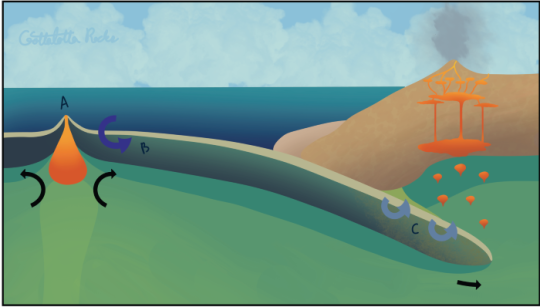
First, let's talk about the three ways you can melt rock:
Increasing the temperature
Decreasing the pressure
Adding volatiles (aka water)
The first one is pretty straight forward- when you increase the heat, things melt. But bodies of hot rock will also melt when they undergo depressurization. Despite the heat, at great depths the overlying pressure will force rock to stay in a solid form. But if that rock is rapidly moved upward through mantle upwelling, you're gonna see some partial melting. This is what we see at mid ocean ridges (point A) and mantle plumes: hot, buoyant rock moves upward and melts due to high temperatures and the release of pressure. It's kinda like when you make stew in an instant pot and it starts to boil when you release the pressure.
So a mantle plume is more like the upward portion of a convection cell, where the rock in the plume is hotter and less dense than the rock in the surrounding mantle. Magma is only produced closer to the surface, where the plume is interacting with the crust and upper mantle. The type of volcanism (and lava) you see associated with a plume depends on whether the plume is interacting with oceanic crust or continental crust. In Hawai'i, a hotspot located under oceanic crust, you get very runny, low-viscosity magmas like this one:
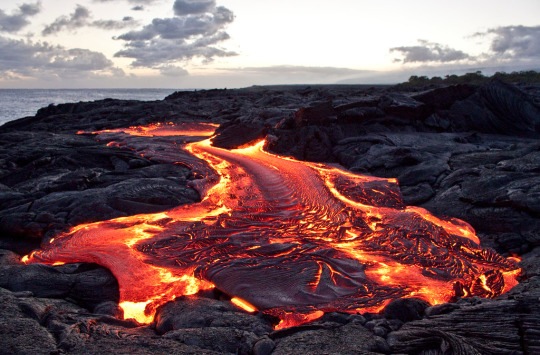
At continental hotspots like Yellowstone you get highly viscous (sticky) magmas that trap gas and produce massive Plinian eruptions.
For your second question about subduction zones, you have to start at the mid ocean ridge. When oceanic plates moves apart, mantle rock moves up to fill the gap and new oceanic crust is produced. Point B represents the hydration of that oceanic crust. Heated water penetrates the oceanic slab through cracks, alters it, and (this is the tricky part) is bound into the rock. When I say that water is incorporated into the rock I don’t mean like a water droplet trapped in pores in the rock, but water is actually incorporated into the mineral structure at an atomic level. This hydrothermal metamorphism makes serpentinites:
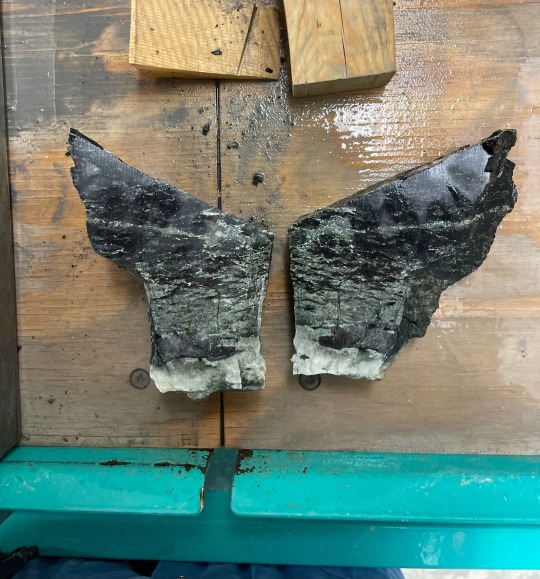
This rock is 10% water by weight and it makes up the ocean floor underneath all that sedimentary cover (which also has a decent amount of water associated with it).
Now that mafic oceanic slab is dense, much denser than the buoyant granitic rocks of the continental crust (lmao I know calling granite buoyant makes me sounds crazy, but it is compared to oceanic crust and the mantle). So when those plates collide the oceanic slab goes right under it. The slab descends into the mantle, the heat and pressure increase, and that serpentinized slab is metamorphosed and dehydrated (point C). All that water bound into the rock comes right back out.
That brings us back to the third way you can melt rock: just add water. The influx of all those fluids into the mantle beneath the continent creates magma. Those magmas rise, percolate, combine, rise some more, and result in volcanism. And since you're melting continental crust you're going to get pretty viscous magmas, but the volcanism in subduction zones can be incredibly diverse, you honestly see everything.
#geology#rocks#science#earth#my entire thesis is about point B#and yes that’s one of my thesis rocks lol#once again this is vastly oversimplified#like every part of this diagram can have its own in depth detailed diagram#lava#volcano#minerals#geolife
35 notes
·
View notes
Photo




Rock Mafia Sketches (2019)
43 notes
·
View notes
Text

Another Puff of Ash from Popocatépetl
Popocatépetl, Mexico’s most active volcano and second-highest peak, sits just 70 kilometers southeast of Mexico City and 40 kilometers west of Puebla. The towering stratovolcano has been erupting for decades, with near constant venting from the crater punctuated by the cyclical growth of viscous lava domes and explosive blasts of ash and volcanic bombs.
The OLI (Operational Land Imager) on Landsat 8 captured an image of one of the volcano’s recent bouts of activity on January 27, 2024. According to Sébastien Valade, a volcanologist at National Autonomous University of Mexico, the brown part of the plume contains ash. In winter, winds often blow the ash to the east, as this image shows. In summer, the wind direction switches and often blows ash to the west and north.
“The ash is thin and not very high in the atmosphere, but there’s still enough of it to have minor impacts on nearby communities,” said Valade, who has developed a platform called MOUNTS (Monitoring Unrest From Space) that tracks Popocatépetl’s activity using data from several satellites. “Compared to what Popocatépetl is capable of, you can think of this as a little hiccup.”
Mexico’s Centro Nacional de Prevención de Desastres (CENAPRED) reported that the ash plume reached heights of roughly 2.4 kilometers (1.5 miles) on January 27 and led to minor ashfall in the towns of Nativitas, San Pablo del Monte, Ixtacuixtla de Mariano Matamoros, Zacatelco, Chiautempan, Santa Ana Nopalucan, Tlaxcala, Totolac, and Panotla. When volcanic ash—made of shards of glass and pulverized rock—falls on nearby communities, it can cause respiratory problems, contaminate drinking water, and harm livestock and crops.
The Washington Volcanic Ash Advisory Center, a NOAA group that tracks ash hazards, issued several alerts to pilots that day. Ash poses a risk to aircraft by blocking engine fuel nozzles, clogging air filters, and causing a range of other problems. According to one recent study of ash dispersal based on two decades of satellite observations from NASA’s MODIS (Moderate Resolution Imaging Spectroradiometer) sensor, there are more than 100 airways that can be affected by ash from eruptions at Popocatépetl.
The current level of activity at Popocatépetl regularly produce explosive eruptions that rank as about 2 or lower on the Volcano Explosivity Index (VEI), according to Smithsonian’s Global Volcanism Program. The highest value on the logarithmic scale is 8—an eruption so powerful that it would eject more than 1,000 cubic kilometers of material to heights of 25 kilometers or above, akin to the massive supervolcano eruptions that have occurred at Yellowstone in the United States or at Mount Toba in Indonesia.
Geologic evidence indicates that Popocatépetl, named for the Aztec word meaning “smoking mountain,” has produced at least four extremely explosive “Plinian” eruptions that ranked 3 or higher on the VEI index since the mid-Holocene, with the most recent in roughly 40 B.C.E. It has produced 37 known eruptions with a VEI of 1 or higher.
The most recent eruptive period began in 1994 after a 70-year period of quiet. “We saw about a decade of intensifying unrest that reached a crescendo of activity in the early 2000s,” Valade said. During the past decade, the intensity of the unrest had been gradually fading. “By early 2022, it looked like the eruption was on track to die out completely,” said Valade.
Then, in mid 2022, NASA’s OMI (Ozone Monitoring Instrument) sensor and the European TROPOMI (Tropospheric Monitoring Instrument) sensor began to detect increasing levels of sulfur dioxide emissions—a sign that fresh magma was entering and refilling Popocatépetl’s magma system and nearing the surface. This proved to be the first stage of another period of activity that peaked with a particularly explosive round of eruptions in May 2023.
Since then, the intensity of activity has been slowly fading, said Valade. He added: “But I expect we’ll continue to see sustained activity in the coming months and years because of that recharge period in 2022.”
NASA Earth Observatory image by Michala Garrison, using Landsat data from the U.S. Geological Survey. Story by Adam Voiland.
4 notes
·
View notes
Text
an idea that haunts me is that Naples, one of the most populous cities in Italy, is built right next to the Vesuvius, of Pompeii fame
wikipedia:
“It is regarded as one of the most dangerous volcanoes in the world because 3,000,000 people live near enough to be affected by an eruption, with 600,000 in the danger zone.
This is the most densely populated volcanic region in the world. Eruptions tend to be violent and explosive; these are known as Plinian eruptions.”
I’m like mamma mia why the fuck would you all live there
but then I read that the soil of volcanoes is very fertile and thus always attractive to people
so the thing that makes it bad and deadly (it’s a volcano) also makes it good and lively (volcanic activity helps food grow)
and the haunting tragedy of this duality is just so:

I mean look at this:
“In Roman times the true nature of the Vesuvius was ignored, while the fertility of its slopes, rich in minerals and especially potassium, was well known.“
its true nature was ignored!!
but they found out!!!
#mytxt#i was trying to convey this#at the christmas dinner#at it fell flat#and internally i was like#u ppl don't GET it#like look at the Meaning
23 notes
·
View notes
Text
I was asked: “Why do you gravitate towards the destructive force that volcanoes can do and sometimes feel helpless?”
No one had ever asked me that.
So I thought about it and wrote down my thoughts.
I started to teach myself about volcanoes because I was afraid.
When the earthquake hit Utah in March of 2020, I had convinced myself that the aftershocks would trigger a Yellowstone eruption. Something in me told me that fear was irrational and that I needed to educate myself.
I started with earthquakes. It began with tectonic plates, then fault lines, then “magnitude,” and then how seismographs work. Once I understood how and why earthquakes happened, I was no longer afraid. Instead, I was fascinated. How the ground beneath our feet constantly moves without us noticing very often was mind-blowing.
Next on the list was Yellowstone.
I learned that there are hundreds of earthquakes happening in the Yellowstone area every day. That fact itself was reassuring. Yellowstone is not technically overdue for an eruption, as many people claim. Ol’ Faithful? Every time it erupts, it releases gas and pressure from the caldera. So technically, in a small way, it’s erupting every day.
Do you know where volcanoes come from?
Tectonic plates.
I thought I had learned everything about tectonic plates while researching earthquakes. Nope.
Volcanoes are formed when there is a more resounding crack inside of a tectonic plate that leads directly to the upper earth’s mantle. It’s the same with smaller fault lines. Magma is pushed up through that crack, and when it doesn’t have a way out, a portion of that crack expands and turns into a pool of magma. That pool is called a caldera. Different fault lines form different types of volcanoes - Cinder Cone Volcanoes, Composite Volcanoes (Stratovolcanoes), and Shield Volcanoes. There are different kinds of eruptions too. The six eruption types are from least explosive to the most explosive; Icelandic, Hawaiian, Strombolian, Vulcanian, Pelean, and Plinian. Each of those eruptions is “rated” by what’s called the “Volcanic Explosivity Index,” or “VEI.”
I can go on and on about how volcanoes work, but that’s not the answer to your question…

What gravitates me toward volcanoes the most, I think, is how calm and beautiful they are on the surface. They look just like the regular geographical makeup of the earth that we know and love. You wouldn’t know that what you were looking at was a volcano unless someone told you so or you witnessed it’s eruption. Nature takes over. Grass and trees grow. Wildlife calls it “home.” The birds sing, and the buffalo graze. Rail falls, the wind blows, and the sun shines. All sorts of footprints are left on a volcano every day … except for the underwater volcanoes … the fish poop on those ones. They’re just a part of the Earth, right?
Until they erupt.
The magma boils and bubbles underneath. Gasses swirl. Pressure builds. The ground above rises and falls as if breathing—the earth trembles. The wildlife calling it home starts to migrate away. They sense the danger, but they don’t know why until…
Then the eruption hits. The violence depends on the type of volcano and the type of eruption. It can be soft; the lava can flow slowly, gently taking over the ground, like Kilauea and Mauna Loa. It can be catastrophic, like Vesuvius and Mt St Helens. The explosion can be powerful - the roar shaking the air, rippling through our bodies, rupturing our eardrums. The shockwave racing around the earth, taking down trees, shattering glass, and moving the water of the oceans. The ash rushing up into the sky, only to fall, hot and thick, suffocating those who breathe air, coating the ground, and burning our feet. The lava and pumice, flying through the sky, rolling down the kills, destroying everything in its path - setting fire to everything we love, crushing the dreams of what once was. Lives are taken and changed—worry and grief strike. The world feels dark.

But, only for a moment, because then…
The rain falls, washing away the ash and taming the fire. The waves calm down. The lava and pumice turn back into rock. The sun comes out. The grass and trees regrow. People and animals rebuild. The birds start to sing again. Flowers begin to grow and bloom.
Everything goes back to normal.
I am a volcano;
Full of love, kindness, patience, understanding, compassion, empathy, courage, and gratitude.
I nurture and support the life that’s around me.
I dig my toes into the dirt, standing tall while I watch over the world beneath me. My head is in the clouds while I dream big. I provide a safe place for those around me, a home.
My mind and heart are filling with emotion.
But the problem is, I don’t know how to open up. I struggle to communicate.
It’s bottled up, like a caldera.
The pressure builds.
My hands tremble. My heart races. My lungs ache. My world spins.
I can’t think. I can’t breathe. I can’t feel.
And then,
It erupts. I explode.
I scream. I cry.
Blood boiling like magma, emotions burning like lava. My words are powerful and destructive, like a shockwave. Outbursts are intense, like the waves. Pride caving in on itself.
Life around me stops.
I caused pain and suffering, even though I didn’t want to.
I grieve the person I was before the eruption.
But, only for a moment, because then…
#volcanes#volcanic#volcano#journal#journal excerpt#emotions#nature#beauty#mt st helens#chaotic wandering warrior
2 notes
·
View notes
Text
Happy Vesuvius Eruption Day, the parent of an entire category of volcanic eruptions (Plinian eruptions, after Pliny the Younger's account of the eruption of Vesuvius over Pompeii)
6 notes
·
View notes